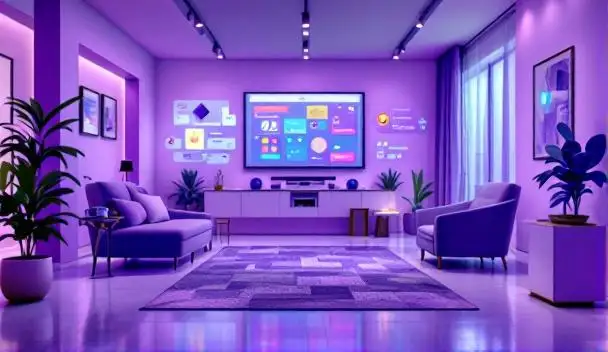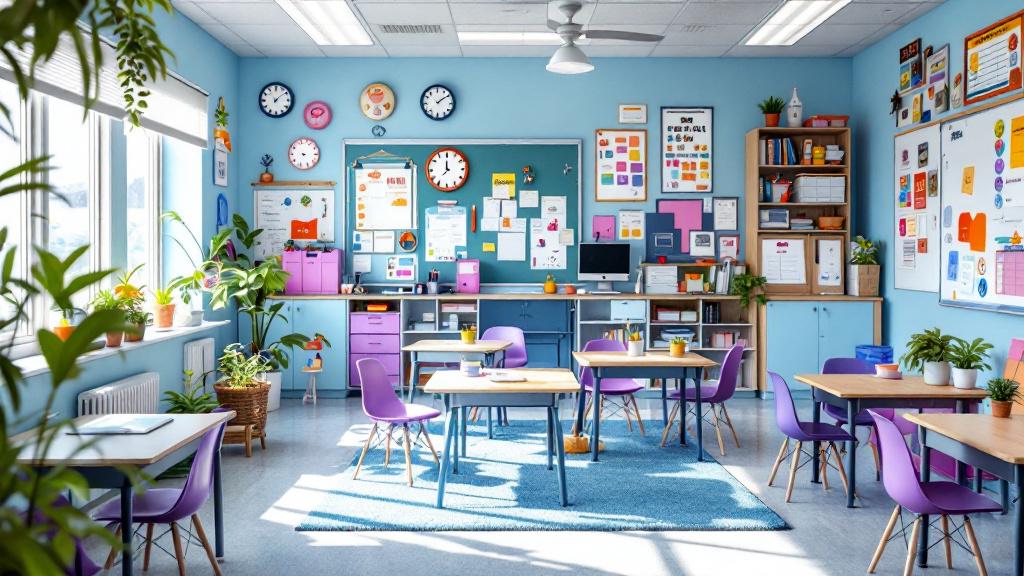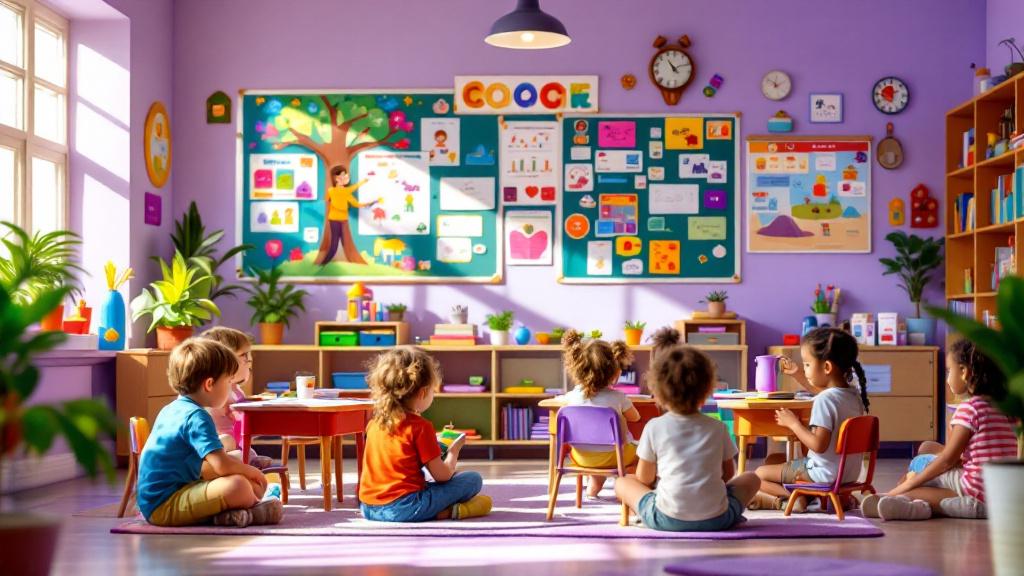Transforming ABA Therapy Through Technological Integration
In the evolving landscape of autism intervention, technology plays a pivotal role in enhancing the effectiveness, accessibility, and personalization of ABA therapy programs. From virtual environments to wearable devices, the integration of innovative tools offers new horizons for clinicians, individuals, and families. This article explores comprehensive methods, tools, and best practices for incorporating technology into ABA therapy, highlighting recent advances and practical tips to optimize outcomes.
Understanding the Role of Assistive Technologies in ABA
 Assistive technology encompasses a wide range of devices and tools designed to support individuals with developmental disabilities, such as autism spectrum disorder (ASD), in overcoming challenges and enhancing their skills. In the context of applied behavior analysis (ABA), these technologies play a crucial role in improving communication, social engagement, cognition, and motor coordination.
Assistive technology encompasses a wide range of devices and tools designed to support individuals with developmental disabilities, such as autism spectrum disorder (ASD), in overcoming challenges and enhancing their skills. In the context of applied behavior analysis (ABA), these technologies play a crucial role in improving communication, social engagement, cognition, and motor coordination.
One prominent category includes assistive communication technologies like augmented reality (AR) and virtual reality (VR). These tools create immersive environments where children can safely practice social scenarios, helping them develop emotional responses and social skills. For instance, VR can simulate real-world situations, enabling children to learn appropriate behaviors in controlled settings.
Multiple tools support broader developmental needs. Mobile applications such as MITA, Symbotalk, Proloquo2Go, and others are designed to enhance communication, attention, and motor skills. They often incorporate interactive animations and videos to teach daily habits like hygiene or telling time, providing engaging ways for children to learn.
Wearable assistive devices, including smartwatches, AR headsets, and hearing aids, help children participate more actively in social settings. These devices can monitor physiological markers like heart rate or sleep patterns, offering real-time data. Neural interfaces are also under development, aiming to enable speech generation directly from brainwaves for severely speech-impaired individuals.
In addition, robotics are increasingly used in ABA therapy to teach social skills and assess behaviors. Robots such as NAO interact with children, offering consistent responses and engaging them in structured activities. The integration of artificial intelligence (AI) and machine learning models further personalizes treatment by predicting effective intervention strategies, tracking progress, and optimizing therapy plans.
Wearable sensor systems can also collect continuous data on behavior, activity, and environmental factors. This real-time monitoring environment allows therapists and caregivers to make immediate, informed decisions, enhancing the effectiveness of ABA interventions.
In summary, technological innovations—from AR and VR to wearable devices and AI—are transforming ABA therapy. They offer personalized, engaging, and more accessible services, helping individuals with autism develop essential skills while fostering independence and social inclusion.
Leveraging Virtual Reality and Augmented Reality for Social Skills Development

How are VR and AR used to simulate social scenarios?
Virtual reality (VR) and augmented reality (AR) are transforming ABA therapy by creating immersive environments that mimic real-world social situations. These technologies allow children with autism to practice interactions, such as greetings, turn-taking, and emotional recognition, in a safe, controlled setting.
In VR, users wear headsets that transport them into simulated social contexts like a classroom or playground. AR overlays digital cues onto the physical environment, providing prompts or feedback during real-world interactions.
This simulation helps children build confidence and develop social-emotional skills without the pressure of real-life consequences.
Why are these environments considered safe and controlled?
One of the top advantages of VR and AR is their capacity to offer a secure space for practice. Therapists can customize scenarios to match each child's current skill level, gradually increasing complexity as progress is made.
These environments enable repetitive practice, which reinforces learning and builds automatic responses. If a child becomes overwhelmed or makes an error, the session can be paused or reset without any real-world repercussions.
Such features promote emotional safety and encourage children to engage more openly.
How do immersive experiences improve engagement?
Immersive experiences through VR and AR significantly boost motivation. These technologies captivate children by providing visually appealing and interactive content that appeals to their interests.
Engagement is further enhanced by gamification, where children earn rewards or progress through levels, making learning fun and rewarding.
The sense of presence and interactivity helps maintain attention and encourages active participation, leading to better skill acquisition and generalization.
| Innovation | Approach | Benefits | Limitations |
|---|---|---|---|
| VR in ABA | Simulated social environments | Realistic practice, emotional safety, customization | Costly equipment, need for technical support |
| AR in ABA | Overlays in real-world settings | Immediate prompts, contextual cues | Dependence on device accuracy, environment variability |
| Video modeling | Watching demonstrations | Enhanced understanding, imitation skills | Limited interaction, requires supplementary practice |
These technologically advanced tools symbolize the future of personalized and accessible ABA therapy, ensuring children on the autism spectrum can refine social skills effectively and comfortably.
Utilizing Mobile Applications to Support Daily Living Skills
 Many mobile applications have become important tools in ABA therapy, especially for teaching daily living skills and communication. Apps like MITA, Symbotalk, Proloquo2Go, Leeloo, Otsimo, ABC Autismo, Autastico II, and Dino Tim offer tailored support to help children with autism improve their communication, cognitive skills, attention, and motor coordination.
Many mobile applications have become important tools in ABA therapy, especially for teaching daily living skills and communication. Apps like MITA, Symbotalk, Proloquo2Go, Leeloo, Otsimo, ABC Autismo, Autastico II, and Dino Tim offer tailored support to help children with autism improve their communication, cognitive skills, attention, and motor coordination.
For instance, Proloquo2Go provides a pictorial and text-based communication platform that enables nonverbal children to express their needs and thoughts effectively. Similarly, Symbotalk and MITA focus on language development through interactive activities that promote vocabulary building and sentence formation.
Beyond communication, these apps facilitate teaching everyday routines such as hygiene, brushing teeth, dressing, and telling time. Interactive platforms often incorporate animations, videos, and gamified activities that make learning these habits engaging and accessible.
To boost motivation and enhance learning, many of these apps feature gamification elements like rewards, points, and levels. This approach encourages children to participate actively and reinforces positive behaviors.
Practical tips for effectively using technology in ABA therapy
Successful integration of these tools involves selecting appropriate apps tailored to the child's age, interests, and skill level. Clear goals should guide their use, ensuring that each activity aligns with the child's development plan.
Tracking progress systematically is vital. By recording responses and improvements, therapists and caregivers can adjust strategies and choose the most effective tools for continued growth.
Making technology a seamless part of therapy sessions increases engagement. When used interactively and consistently, these apps motivate clients through visual and auditory reinforcement, supporting the principles of shaping and reinforcement.
Overall, personalized, goal-oriented, and well-monitored use of mobile applications maximizes the benefits of technology, leading to meaningful skill acquisition and independence.
How can technology be incorporated into ABA therapy programs?
Integration of technology into ABA programs involves various methods. Digital apps and interactive games serve as engaging platforms for teaching new skills and reinforcing existing ones. Data collection software simplifies tracking progress and analyzing behavioral patterns, enabling data-driven decision-making.
Immersive environments created through virtual and augmented reality allow children to practice social and everyday skills in realistic scenarios, boosting generalization.
Telehealth platforms expand therapy access beyond traditional settings, delivering services remotely and maintaining continuity of care. Wearable devices monitor physiological signals and activity levels, providing real-time feedback to tailor interventions.
Video modeling tools demonstrate appropriate behaviors visually, helping children learn through mimicking real-life actions. Many programs also employ AI and machine learning to analyze behaviors, predict progress, and customize strategies effectively.
Incorporating these technologies enhances not only engagement and learning outcomes but also broadens access to quality ABA therapy, making it more adaptable to individual needs and environments.
The Integration of Wearable Technologies and Sensor Systems
 Wearable devices such as smartwatches and sensor systems have become valuable tools in ABA therapy, providing continuous monitoring of behaviors and physiological states. These technologies enable therapists and caregivers to gather detailed, real-time data about a child's activity levels, sleep patterns, heart rate, and other physiological markers.
Wearable devices such as smartwatches and sensor systems have become valuable tools in ABA therapy, providing continuous monitoring of behaviors and physiological states. These technologies enable therapists and caregivers to gather detailed, real-time data about a child's activity levels, sleep patterns, heart rate, and other physiological markers.
Smartwatches can track physical activity, physiological signals like sleep quality and heart rate, and even detect signs of stress or emotional arousal. Sensor systems integrated into clothing, wristbands, or other wearables can monitor motion, environmental conditions, and biomedical parameters, offering a comprehensive view of the child's overall well-being.
This data collection supports personalized treatment plans by identifying patterns and triggers that influence behavior. Real-time feedback allows for immediate adjustments to interventions, enhancing responsiveness and effectiveness. For instance, if a child's physiological data indicates heightened stress, caregivers can modify the environment or provide calming strategies promptly.
Moreover, wearable technology facilitates data-driven decision making. Using this information, behavior analysts can evaluate the success of interventions, modify approaches tailored to the child's needs, and set measurable goals. This integration of technology promotes a proactive and scientific approach to managing autism, improving outcomes while supporting family involvement.
| Device Type | Functionality | Benefits | Challenges |
|---|---|---|---|
| Smartwatches | Monitor activity, sleep, heart rate | Continuous data collection; easy to wear | Battery life; data privacy concerns |
| Sensor Systems | Track motion, environment, biomedical data | Detailed insight into behavior and physiology | Cost; data analysis complexity |
| AI & Data Analytics | Process sensor data for insights | Personalized adjustments; early warning signs | Technical expertise required |
The use of these advanced technologies is aligned with ABA's goal of employing systematic, scientific methods. They help create a more responsive, personalized, and effective therapy environment. However, ethical considerations such as privacy, informed consent, and equitable access are essential as these tools become more integrated into practice. As technology evolves, its thoughtful application can greatly enhance the quality and reach of ABA services for individuals on the autism spectrum.
Ethical Considerations and the Future of Technology in ABA
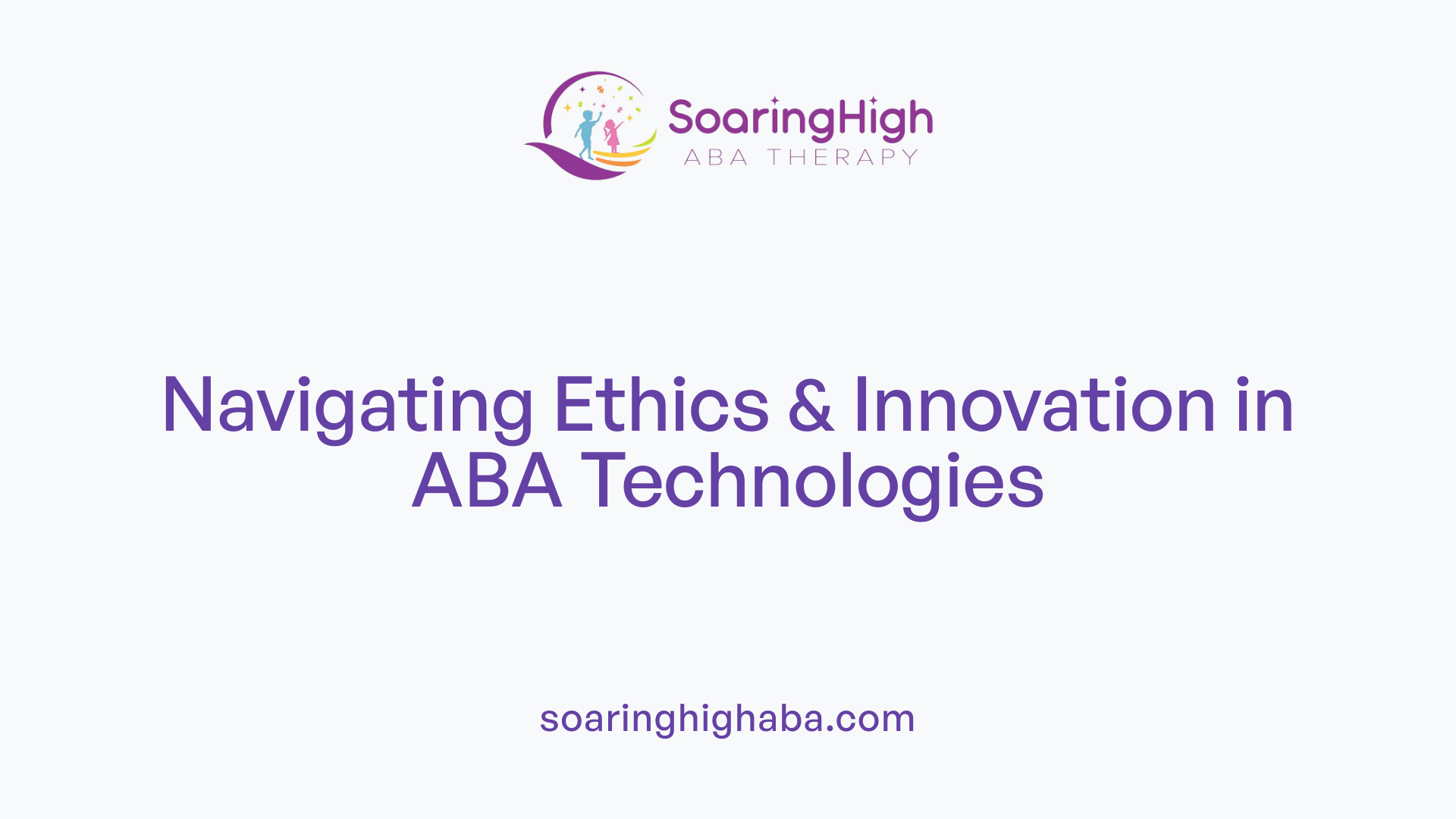 Ensuring privacy, informed consent, and data security
Ensuring privacy, informed consent, and data security
As technological tools become more embedded in ABA therapy, safeguarding client privacy and data security remains crucial. Therapists must obtain informed consent from families, clearly explaining how data collected through wearables, AR/VR devices, or telehealth platforms will be used, stored, and protected. Implementing robust security measures, such as encryption and secure data storage, helps prevent breaches and maintains confidentiality.
Addressing cultural and social justice issues
Technology has the potential to enhance access to ABA services, especially for families in remote or underserved areas. However, disparities in technology access and literacy can create inequities. It’s essential to address these gaps by providing equitable resources and culturally sensitive approaches, ensuring all children benefit regardless of socioeconomic or cultural background.
Incorporating interdisciplinary collaboration and innovation
The future of ABA is increasingly intertwined with fields like artificial intelligence, data analytics, and biomedical engineering. By fostering collaboration among clinicians, researchers, engineers, and ethicists, the field can develop novel interventions that are personalized and effective. Innovations such as AI-guided intervention guidelines and real-time behavioral assessment platforms promise to refine therapy protocols while maintaining ethical standards.
What are the benefits and challenges of using technology in ABA therapy?
Technology offers many benefits, including higher engagement, more personalized treatments, and efficient data collection. Tools like social stories, visual schedules, and virtual environments help children learn and generalize skills in motivating ways. Nonetheless, challenges exist, such as high costs, the need for specialized training, and risks to privacy. Ensuring technology complements the human element rather than replacing it is vital.
What is the definition of 'technological' in ABA?
In ABA, 'technological' describes procedures and interventions that are described in precise, detailed terms. This clarity ensures that anyone trained can replicate the methods accurately, supporting consistency across practitioners and settings. Detailed documentation includes steps, contingencies, and reinforcement schedules, highlighting the importance of transparency and systematic process design.
Conclusion: Embracing the Future of ABA with Technology
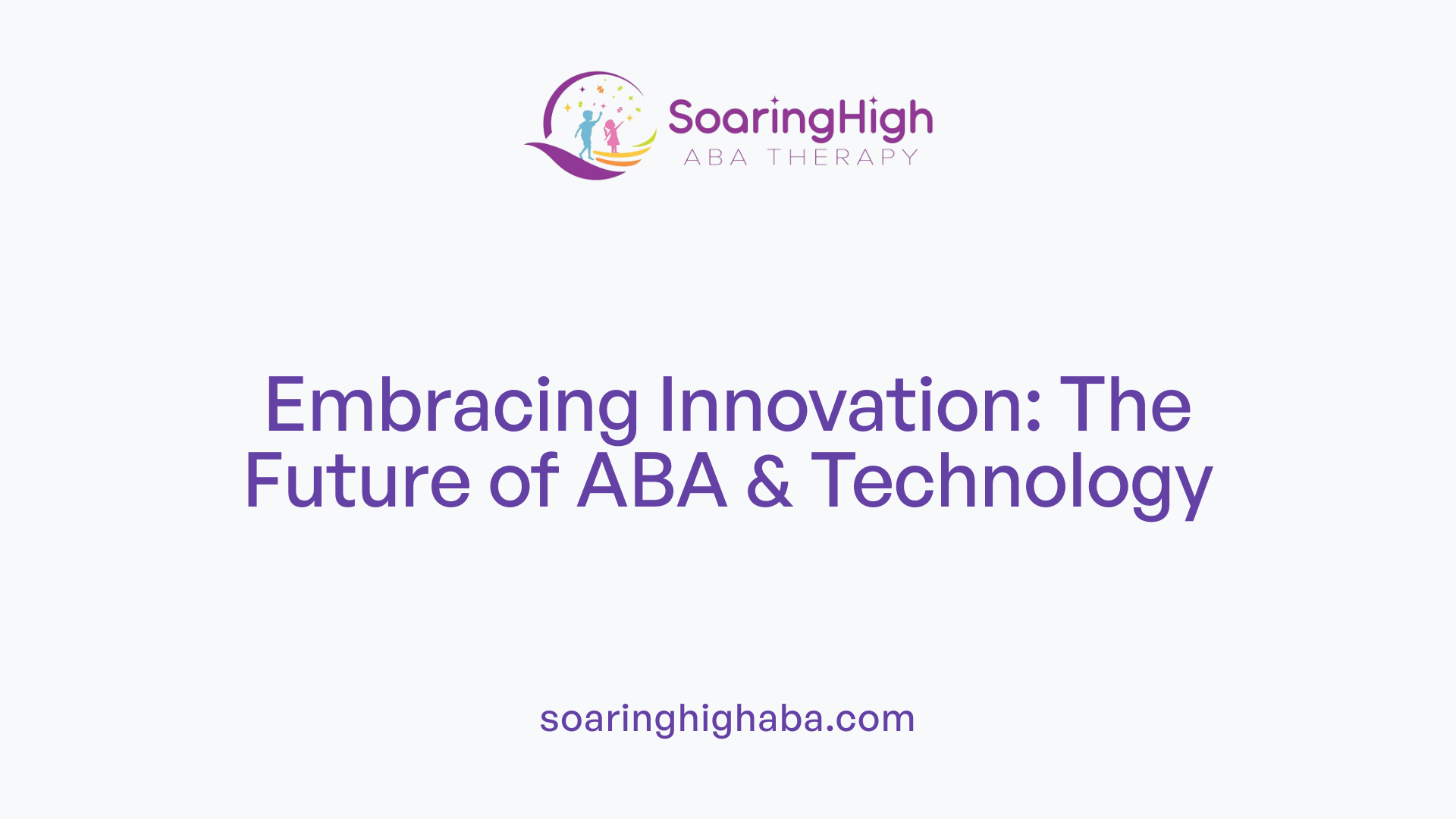 The integration of innovative technologies is transforming Applied Behavior Analysis (ABA) therapy, opening new horizons for children with autism. Emerging tools such as artificial intelligence (AI), virtual reality (VR), augmented reality (AR), wearable devices, and telehealth platforms offer more personalized, engaging, and accessible interventions.
The integration of innovative technologies is transforming Applied Behavior Analysis (ABA) therapy, opening new horizons for children with autism. Emerging tools such as artificial intelligence (AI), virtual reality (VR), augmented reality (AR), wearable devices, and telehealth platforms offer more personalized, engaging, and accessible interventions.
AI and data analytics enable therapists to tailor treatment plans based on real-time behavioral data. These technologies help predict progress, automate routine assessments, and identify the most effective strategies for each individual. VR and AR create controlled environments for practicing social skills, allowing children to safely explore social scenarios and build confidence.
Wearable devices like smartwatches and biosensors provide continuous monitoring of physiological and activity data, offering immediate insights into emotional states or behavioral patterns. Telehealth services extend therapy access to remote or underserved areas, fostering greater inclusivity and parental involvement.
Advancing interdisciplinary collaborations among technologists, clinicians, and families is crucial. Combining expertise enhances the development of innovative tools that are both effective and user-friendly.
However, as technology becomes more embedded in ABA practices, maintaining ethical standards remains vital. Respecting privacy, securing informed consent, and ensuring data protection are fundamental. Personalized interventions, driven by thorough assessments and cultural competence, ensure that treatment respects each child's unique needs.
The future of ABA lies in harmonizing technological innovation with ethical responsibility and collaborative care. This approach promises not only improved outcomes but also greater equality in access to quality autism interventions.
Moving Forward: Embracing Innovation to Enhance ABA Therapy
The integration of technology into ABA therapy offers unprecedented opportunities to improve intervention accessibility, personalization, and outcomes. As innovations such as AI, virtual reality, wearable sensors, and telehealth platforms continue to develop, practitioners can design more engaging, effective, and data-driven programs tailored to individual needs. Upholding ethical standards, ensuring data security, and fostering interdisciplinary collaboration are essential to realizing the full potential of technological advancements. By embracing these innovations with a commitment to client dignity and social justice, ABA professionals can significantly enhance the quality of life for individuals on the autism spectrum and beyond.
References
- Technology and Applied Behavior Analysis (ABA)
- ABA and Technological Advancements
- ICT Framework for Supporting Applied Behavior Analysis in the ...
- Technology to Facilitate Telehealth in Applied Behavior Analysis
- The Role of Technology in ABA Therapy
- The Future of ABA Therapy: Advancements and Innovations in...
- ABA and Technology: Innovations in Autism Therapy
- ABA Therapy - Alora Behavioral Health
- ABA and Technology: Innovations in Autism Therapy
- The Future of ABA Therapy: Advancements and Innovations in...





































































